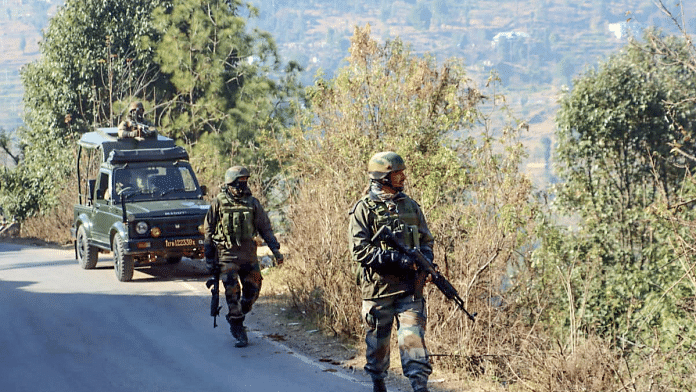“He who controls the Banyan Tree will be the one who exercises intimate control over the population.” This is not how a military book usually begins. At least not one focused on a specific operation, and that too from two decades ago.
It is only now that Operation Sarp Vinash, the Indian Army’s 2003 campaign to clear terrorist strongholds in the Hill Kaka area of Poonch-Rajouri, is being recognised glowingly. Institutional memories aren’t something to write home about in India, particularly those related to operational matters with competing narratives. So it is a welcome development when the first book on a much-discussed operation is published, and by the officer who conceptualised it.
Operation Sarp Vinash by Lt Gen Hardev Singh Lidder, written with Jaishree Laxmikant, has several unexpected insights.
The “Banyan Tree” in this context is not, of course, a physical canopy providing shade over a village space. It represents much more than that: a sense of belonging and continuity for those who need a space that makes them feel secure, protected, and shielded from threats. In the conditions that prevail in an insurgency, it is security forces that must take the shape and role of protectors, both literally and metaphorically.
The militant attacks of 2023-24 in Poonch-Rajouri make this book particularly timely. What was needed two decades back was equally needed a couple of years ago.
Also Read: Counter-insurgency is Indian military’s reality. Op Sindoor was brief flash in combat spectrum
A safe haven for terrorists
The area affected once again was the complex of ridge lines that intersect the districts of Rajouri and Poonch, and run into Pakistan-occupied Kashmir as well. The areas of POK adjoining these two districts are sociologically and in family terms far more conjoined than the areas apposite the Kashmir Valley. The ceasefire line of 1948 actually divided fields and families, who continued to mingle and migrate as conditions allowed. Even after its recognition as the Line of Control following the 1971 Indo-Pak War, movement between neighbouring villages was still possible. This contributes to its enormous importance.
For Pakistan, the importance of this area can never be underestimated. From the simple point of geography, the recognised international boundary is a mere 50-odd kilometres from Islamabad. The fear of being swamped in a military tide is a living possibility. Coupled with the fact that the terrain allows an easier entry into the Kashmir Valley over the Pir Panjal range, geography becomes a serious temptation. Added to that is the sociology of the overlapping region, where common relatives across the LC allow safe conduct and care for terrorists operating here.
Many were infiltrated for that very purpose, creating a veritable liberated zone in the run-up to the dream third phase of an insurgency. At this stage, the terrorist groups have managed to secure a liberated zone, close enough to infiltration points to keep the build-up secure and safe. Once stabilised, this zone provides an entry point for the main handlers—in this case, the Pakistan Army—when they move in after the balloon goes up. They then have an easily accessible and secure base for further expansion of territory and operational space.
Hill Kaka provided just that space in the period from the late 1990s until the successful eviction in 2003. It is a largely inaccessible, deeply forested bowl strategically located over the Suran River and the historical villages of Bafliaz and Surankote on the Rajouri-Poonch road. Its dual proximity to the LoC as well as the Pir Panjal range makes it an ideal holding base for terrorist groups who need to rest and regroup before further movement into the Kashmir Valley. Or even stay put to dominate the local population.
In that sense, it became the Banyan Tree on the hill. Until Sarp Vinash under Lt Gen Lidder.
The Special Forces veteran, coming from a hugely successful command of his battalion in Sri Lanka during the Indian Peace Keeping Force tenure, used his counter-insurgency tactics honed in the muggy jungles to tackle the craggy and snowy ridge lines. Terrain may vary from one operational area to another, but guiding doctrines are the same everywhere world over.
As General Officer Commanding Romeo Force, then Maj Gen Lidder used more of infantry than relied on his Special Forces, already running a highly successful campaign across the then Jammu and Kashmir state. He didn’t shy away from making it manpower intensive, completely against Special Forces principles.
The Hill Kaka bowl was waylaid over a period of time as regular infantry units and a Rashtriya Rifles battalion tightened the noose on the terrorist groups in an effective manner. Logistical, engineering, and aviation support changed the equation unlike anything seen before in an operational environment.
It’s little surprise then that when attacks spiked again a couple of years ago, many called for another operation like Sarp Vinash.
Manvendra Singh is a BJP leader, Editor-in-Chief of Defence & Security Alert and Chairman, Soldier Welfare Advisory Committee, Rajasthan. He tweets @ManvendraJasol. Views are personal.
(Edited by Asavari Singh)






